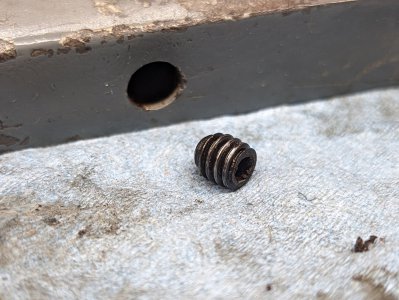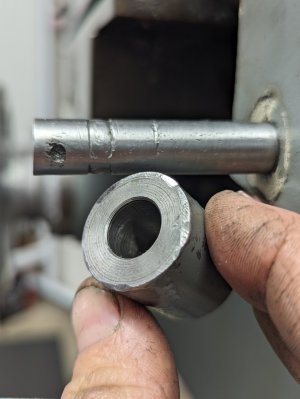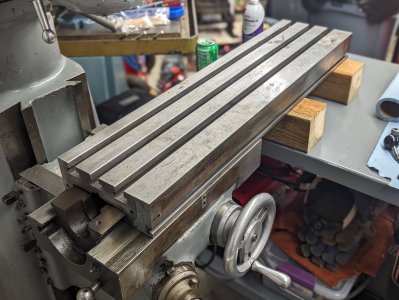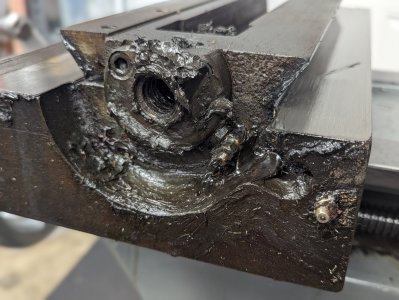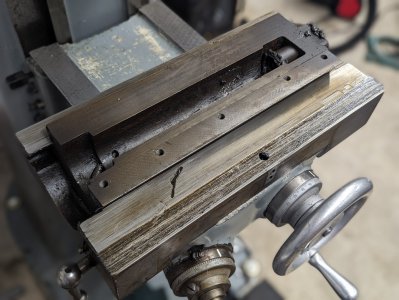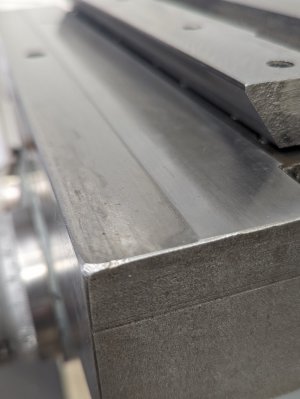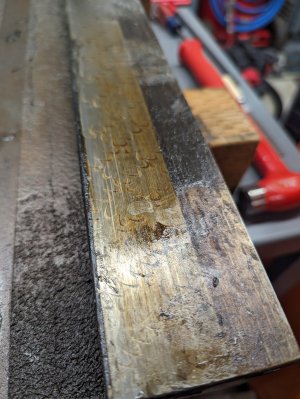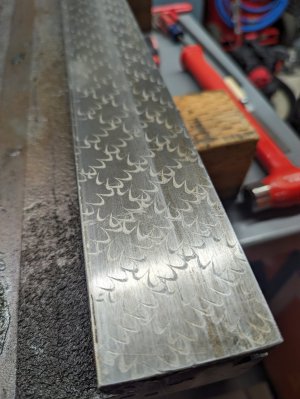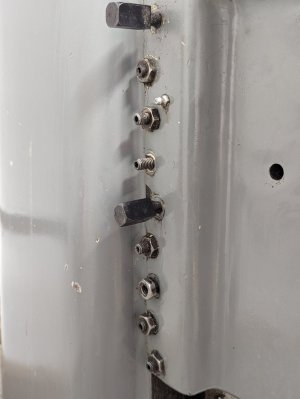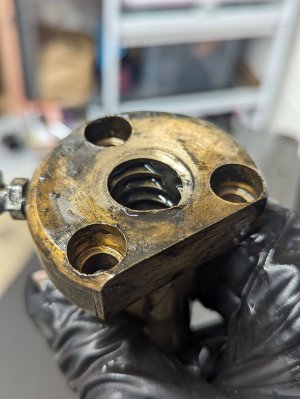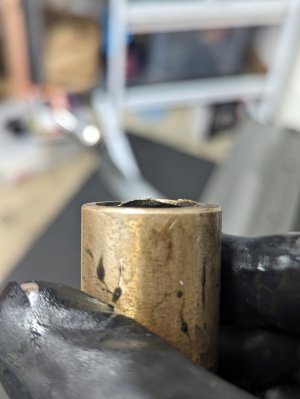- Joined
- Apr 9, 2023
- Messages
- 188
Question: why the hell are these two holes so slanted?
Pictured: ...and why aren't they chamfered?
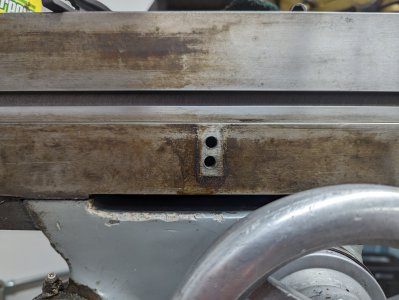
I honestly don't think the manufacturer would have drilled those that far out of vertical or left them unfinished...nor do I think they would have built this next widget to an equally-drunken alignment.
Pictured: Like, for seriously: dafuq?
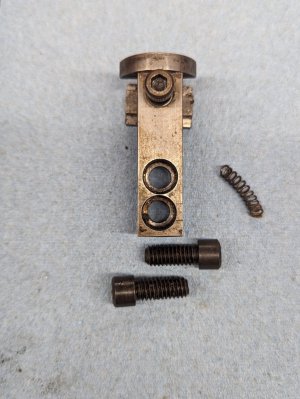
I vaguely recall pulling this off of the saddle, but I have no idea where that spring was located. It's VERY dead, regardless...so, into the Box of Shame it goes. And while we're at it...
Pictured: These holes are kind of uncool as well.
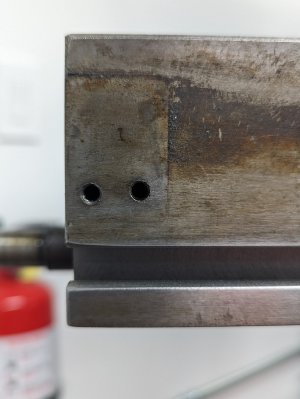
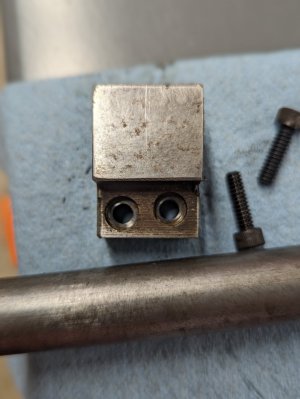
So, here's my theory: either this X-axis powerfeed is an aftermarket thing entirely - and that's what all of these parts are for, incidentally: it's the auto-stop system - or they were made badly and located on the table based on the existing manufacturing errors. And after that, the entire system was somewhat beaten and bashed.
Pictured: Ugh... this is gonna take some work.
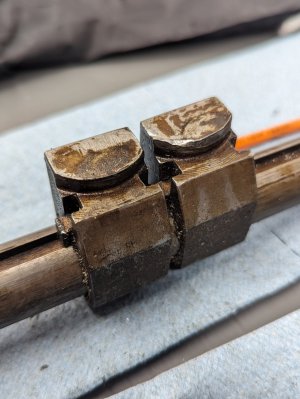
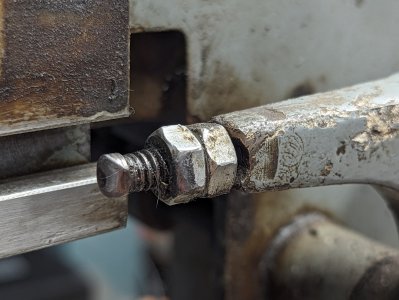
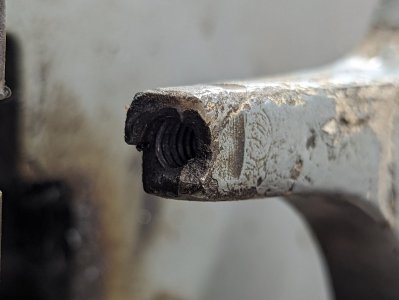
Pictured: ...and why aren't they chamfered?

I honestly don't think the manufacturer would have drilled those that far out of vertical or left them unfinished...nor do I think they would have built this next widget to an equally-drunken alignment.
Pictured: Like, for seriously: dafuq?

I vaguely recall pulling this off of the saddle, but I have no idea where that spring was located. It's VERY dead, regardless...so, into the Box of Shame it goes. And while we're at it...
Pictured: These holes are kind of uncool as well.


So, here's my theory: either this X-axis powerfeed is an aftermarket thing entirely - and that's what all of these parts are for, incidentally: it's the auto-stop system - or they were made badly and located on the table based on the existing manufacturing errors. And after that, the entire system was somewhat beaten and bashed.
Pictured: Ugh... this is gonna take some work.





